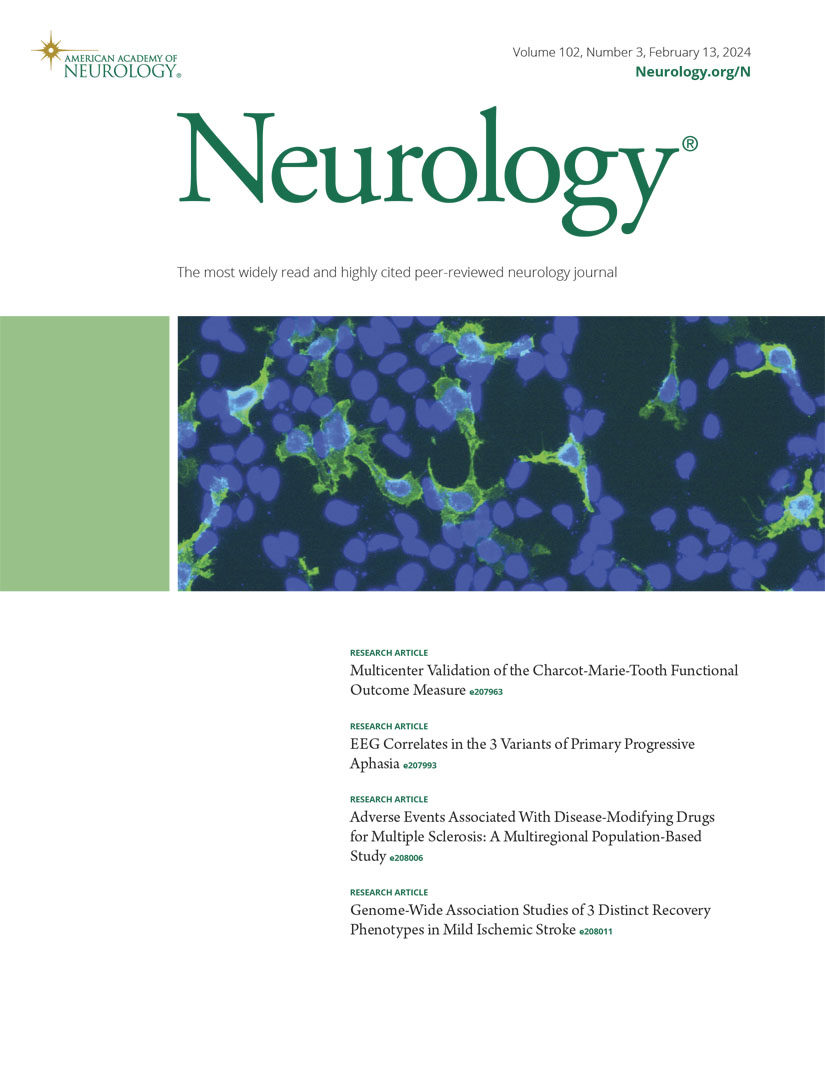Clinical Reasoning: A 27-Year-Old Man With Progressive Bilateral Vision Loss Resistant to Steroid Therapy.
IF 7.7
1区 医学
Q1 CLINICAL NEUROLOGY
引用次数: 0
Abstract
This case involves a 27-year-old man who presented with progressive bilateral visual impairment that initially improved with steroid therapy but subsequently worsened. The clinical problem centers on diagnosing optic nerve damage with meningeal involvement unresponsive to standard interventions. The patient's vision loss began insidiously in the right eye and later affected the left, with fundoscopy showing bilateral optic nerve atrophy. Although steroids provided temporary relief, the condition deteriorated, necessitating further investigation. MRI revealed dural thickening and enhancement near the optic canals, suggesting an infiltrative or compressive process. The diagnostic approach required considering inflammatory, compressive, and infiltrative etiologies, with a biopsy ultimately proving critical when initial treatments failed. This case underscores the importance of a stepwise diagnostic strategy and highlights the need to consider rare conditions in atypical presentations, guiding readers through the differential diagnosis.临床理由:一个27岁的男性进行性双侧视力丧失抵抗类固醇治疗。
本病例涉及一名27岁的男性,他表现为进行性双侧视力障碍,最初通过类固醇治疗改善,但随后恶化。临床问题集中在诊断视神经损伤与脑膜累及无反应的标准干预。患者的视力下降开始于右眼,后来影响到左眼,眼底镜检查显示双侧视神经萎缩。虽然类固醇可以暂时缓解,但病情恶化,需要进一步调查。MRI显示视神经管附近硬脑膜增厚和强化,提示浸润或压缩过程。诊断方法需要考虑炎症、压迫性和浸润性病因,当初始治疗失败时,活检最终证明至关重要。本病例强调了逐步诊断策略的重要性,并强调了在非典型表现中考虑罕见情况的必要性,指导读者进行鉴别诊断。
本文章由计算机程序翻译,如有差异,请以英文原文为准。
求助全文
约1分钟内获得全文
求助全文
来源期刊

Neurology
医学-临床神经学
CiteScore
12.20
自引率
4.00%
发文量
1973
审稿时长
2-3 weeks
期刊介绍:
Neurology, the official journal of the American Academy of Neurology, aspires to be the premier peer-reviewed journal for clinical neurology research. Its mission is to publish exceptional peer-reviewed original research articles, editorials, and reviews to improve patient care, education, clinical research, and professionalism in neurology.
As the leading clinical neurology journal worldwide, Neurology targets physicians specializing in nervous system diseases and conditions. It aims to advance the field by presenting new basic and clinical research that influences neurological practice. The journal is a leading source of cutting-edge, peer-reviewed information for the neurology community worldwide. Editorial content includes Research, Clinical/Scientific Notes, Views, Historical Neurology, NeuroImages, Humanities, Letters, and position papers from the American Academy of Neurology. The online version is considered the definitive version, encompassing all available content.
Neurology is indexed in prestigious databases such as MEDLINE/PubMed, Embase, Scopus, Biological Abstracts®, PsycINFO®, Current Contents®, Web of Science®, CrossRef, and Google Scholar.
 求助内容:
求助内容: 应助结果提醒方式:
应助结果提醒方式:


